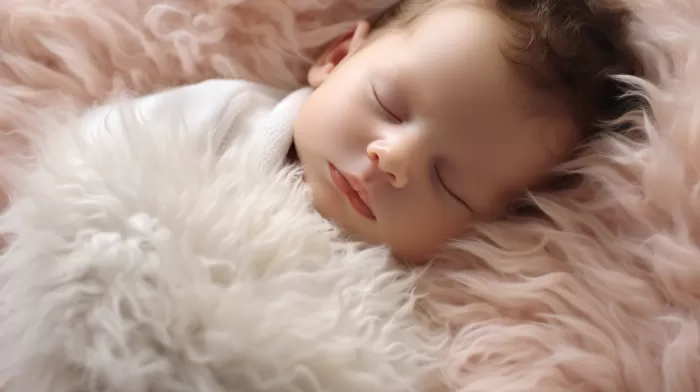Asthma continues to be a growing issue in the United States, significantly impacting the lives of numerous children each year. Researchers in Germany have discovered a surprisingly simple strategy to potentially reduce the risk of asthma and breathing difficulties in children.
An Unlikely Solution
A recent study has revealed that having newborn babies sleep on animal fur for the first three months of their lives may reduce their risk of developing asthma later in childhood. It is believed that the bacteria and other microbes found on the fur can contribute to a better functioning immune system for the baby and, in turn, a decrease in allergies and asthma.
This research correlates with earlier findings that young children living in homes with higher levels of bacteria or those living on farms might experience protection against asthma.
Ten-Year Study Sheds New Light
The decade-long study in Germany investigated the health and development of more than 3,000 children born in 1998. Approximately half of the children involved in the study were exposed to sleeping on animal fur or skin during their first three months of life.
The results of the study were significant. The data revealed that children who slept on animal skin up until the age of three months experienced a remarkable 79% reduction in their risk of developing asthma by the age of six years old, compared to their counterparts who did not sleep on animal skin.
Christina Tischer, a researcher at the Helmholtz Zentrum München Research Center, explains that “previous studies have suggested that microbes found in rural settings can protect from asthma. An animal skin might also be a reservoir for various kinds of microbes, following similar mechanisms as has been observed in rural environments. Our findings have confirmed that it is crucial to study further the actual microbial environment within the animal fur to confirm these associations.”
The Importance of Microbes
The focus on microbes is essential in understanding potential preventative measures against asthma and other allergies. When young children are exposed to a wider variety of bacteria during their early development, their immune systems can adapt and become less likely to respond negatively to allergens later in life.
The “hygiene hypothesis” explains that children raised in more sterile environments may have a higher likelihood of developing allergies and asthma. This is due to their immune systems lacking past exposure and thus identifying harmless substances such as pollen or pet dander as threats, causing an allergic response.
Can Animal Fur Really Help?
Until further research is conducted, it is not definitively guaranteed that sleeping on animal fur is the answer for asthma prevention. However, the results of this particular study hold promise for its potential. It’s important to make an informed decision based on the most updated scientific findings and consider both the pros and cons of incorporating animal fur into a child’s early months.
If you decide to introduce animal fur to your child, it’s crucial to maintain proper hygiene and cleanliness. It’s essential to choose clean, allergen-free animal fur and ensure it’s not triggering any adverse reactions in your child.
Ultimately, the evidence provided by this study suggests that choosing to have your child sleep on animal fur during the first months of their life might significantly impact their future respiratory health. This seemingly simple decision could have a lasting impact on their potential risk for developing asthma as they progress through their childhood years.



